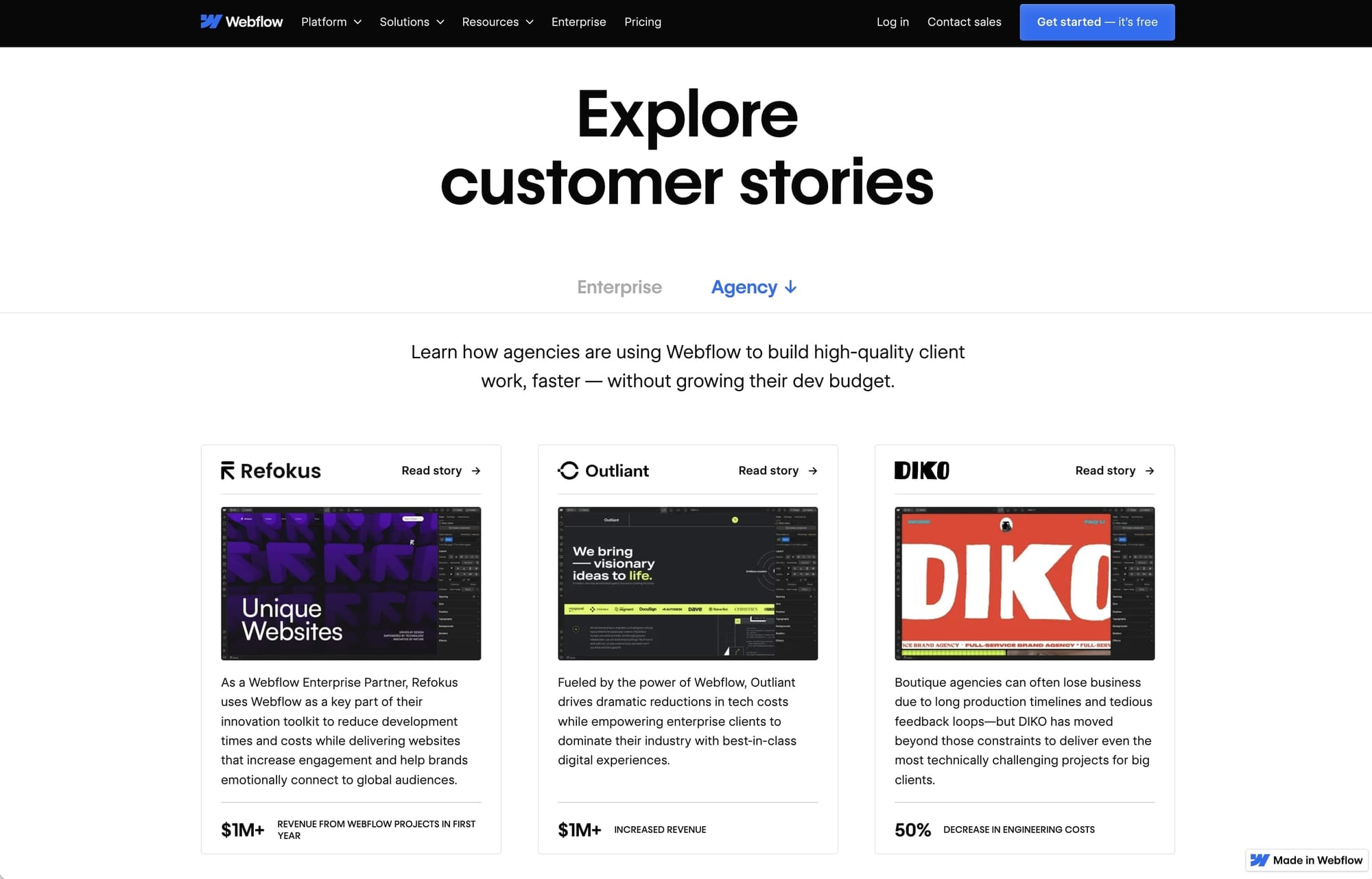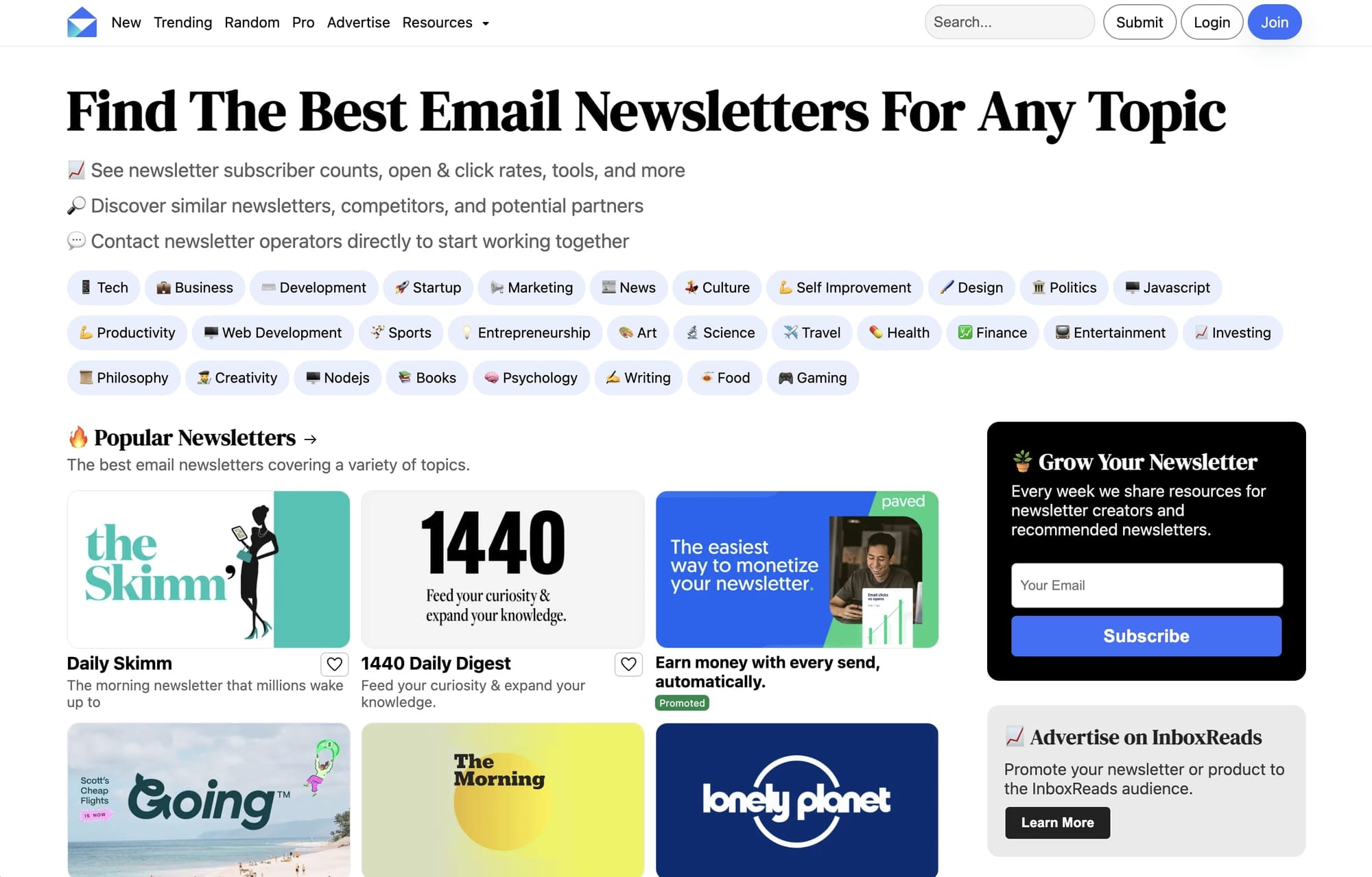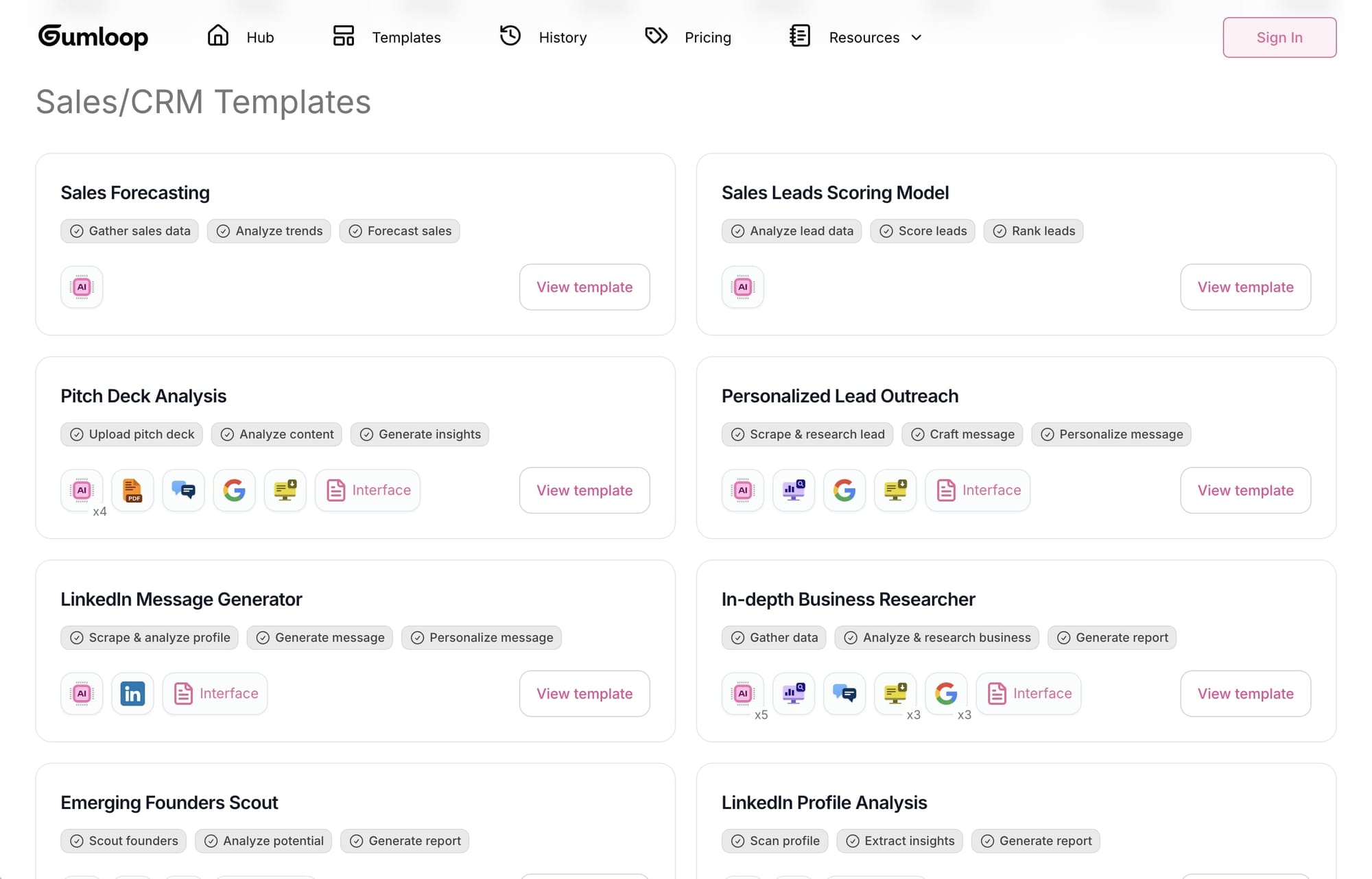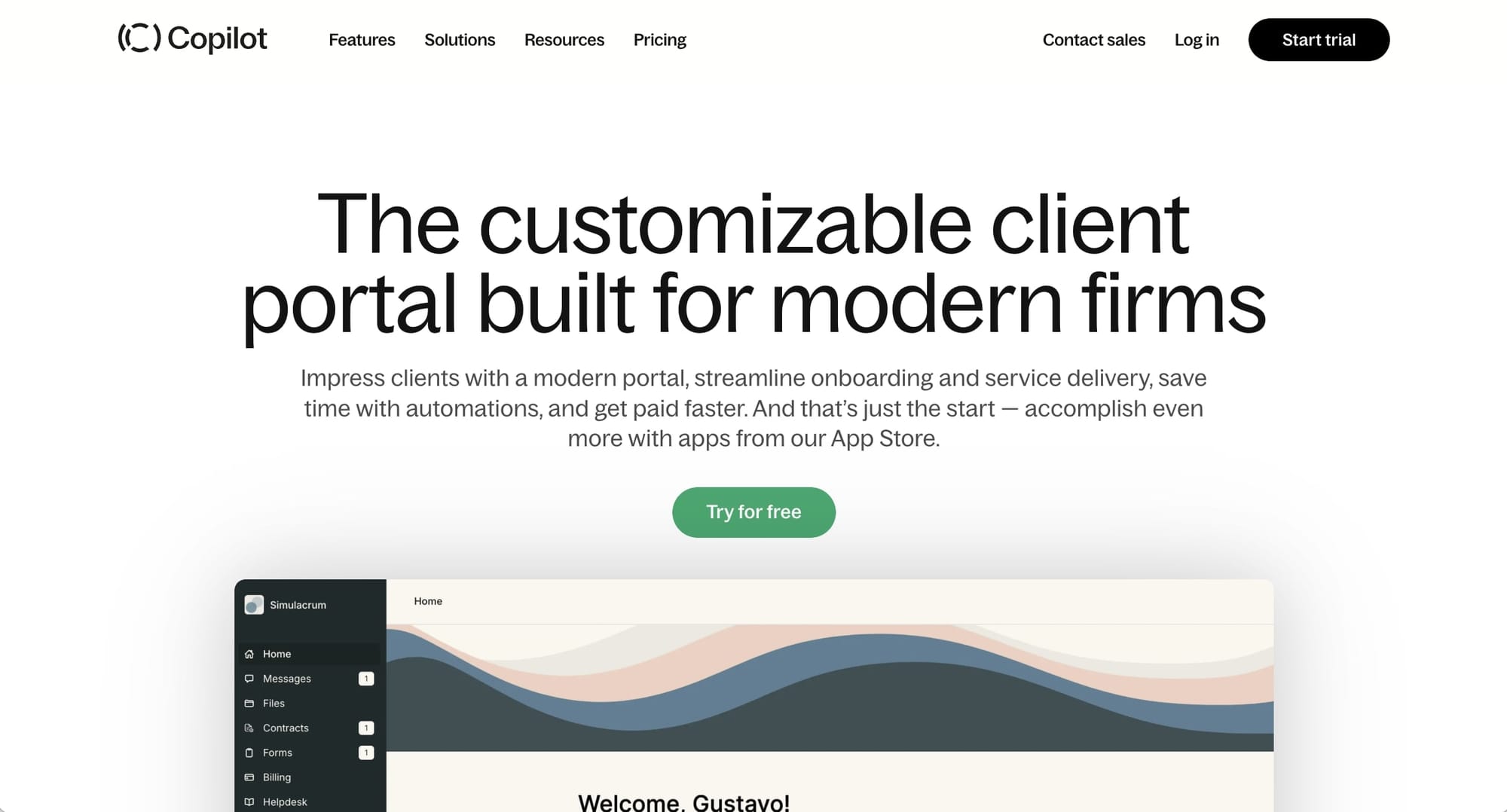How to grow a digital marketing agency fast in 2025
Want to learn how to grow a digital marketing agency fast? Here are 10 proven strategies I've used to find clients for my own marketing agency.

When I first quit my job to start a marketing agency, I had no idea how I was going to find clients.
I knew what services I wanted to offer. But I wasn’t sure who was going to get the most value from it and how I was going to find those people.
If you’ve felt the same way, you’re not alone. Starting and learning how to grow a digital marketing agency comes with a lot of challenges. Finding your niche, attracting the right clients, and delivering an unforgettable (in a good way) experience — it’s a lot to manage, especially when you’re trying to scale.
That’s why I’m sharing my 10 strategies that made all the difference for me. These helped me go from being unsure about finding clients to running an agency I’m proud of.
We’ll cover everything from figuring out how 9-figure agencies operate, to tactical stuff like how to get in front of the right people to promote your agency.
Alright, no more rambling from me. Grab a cup of coffee (or tea or water) and let’s get into it.
10 powerful strategies to grow your digital marketing agency
Here are 10 strategies to grow a digital marketing agency:
- Find a niche, then find it again
- Focus on client retention
- Create an agency website
- Make downloadable resources
- Create case studies
- Create content for search engines
- Do newsletter sponsorships
- Partner with micro-influencer
- Automate your outbound process
- Upsell extra services to grow LTV
Let’s go over each one.
1. Find a niche, then find it again
There's no question that riches are in the niches. And this is especially true when you are building a marketing agency. There are so many different services you can provide to people and businesses. And on top of that, there are so many different types of businesses you can provide those services to.
It’s all about Service + Audience — work with that combination.
For example, you can provide SEO services as your niche. But that part where I mention “find it again” I mean that you should find a sub-niche. SEO services are so broad so you want to stand out by offering a very specific type of SEO. In this case, you can pick something like local SEO — doing SEO for local businesses who want to increase their online presence in search engines.
But then, you want to go even deeper.
In this case, we want to find a very specific audience to provide this service. For example, we can pick doing local SEO for tow truck companies.
Now that’s specific.
The more specific you can get with your marketing services the better. This is how you become well-known for being the best at doing one specific service for one specific type of audience.
Depending on the TAM (total addressable market) of your audience that needs your services, you can build a very successful digital marketing agency.
However, if you want to get to the 8 and 9 figures a year in revenue, you’ll have to pay close attention to strategy two.
2. Focus on client retention
Love him or hate him, Neil Patel has built one of the most successful digital marketing agencies — doing over $100M in revenue a year.
I recently heard him say on a podcast that the main way they were able to drive such large amounts of revenue was through client retention and expanding on their services.
In the podcast, he explained how most agency owners think about serving a client on a 1-2 year timeline, sometimes even less. But at his agency, NP Digital, they think about how to retain clients for 10 years.
This way of thinking completely unlocks a different way of thinking about your digital marketing agency.
You go from simply delivering a service and moving on to the next client, to focusing on how you can continually make your existing clients successful so they stick around for the long run.
While the first strategy in this article acts as your wedge — a way to get well-known and build a client base — this strategy helps you focus more deeply on your clients without the need to constantly find new ones.
For example, if you’re providing SEO services for tow truck companies, one way to expand is by offering website creation services. Then, you can charge a monthly retainer to maintain and optimize those websites, creating a recurring revenue stream and deepening your services with your clients.
The result is a compounding effect that increases the LTV (lifetime value) of your clients and drives sustainable growth for your agency.
3. Create an agency website

This one might seem obvious, but you’d actually be surprised at how far you can make it without even having a website.
When I first started my content marketing agency, I didn’t even have a website. Everything worked off word-of-mouth referrals and my network from my previous full-time job leading SEO at a large tech company.
But if you want to make it big and attract a lot of inbound traffic to your website, you need a website. A website is going to be your greatest marketing asset for your agency (and will be needed to execute on some of the other strategies in this article).
The main thing you want to get right here is to have taste.
Most marketers do not have great taste, and their website look like some cookie-cutter template from 2005. You want your website to show not tell about how good you are at what you do.
The thing is, most people do judge a book by its cover. So you’ll want to have a great responsive design, an amazing user experience, and just overall good branding. Nowadays, there are many great website builders designed for marketing agencies — like Webflow, Framer, or Squarespace (sorry WordPress).
If you want to look at some examples and gain some inspiration I wrote a blog post on different websites from marketing agencies you can check out.
4. Make downloadable resources
If you want to attract leads and build trust with potential clients, creating downloadable resources is one of the simplest ways to do it.
These resources act as lead magnets — valuable tools, guides or templates that your ideal clients can’t resist downloading. In return, you get their contact information and can nurture them into paying clients.

Think about the problems your niche is trying to solve and create a resource that solves one of those problems quickly. For example, if you’re offering SEO services for tow truck companies (like we mentioned earlier), you could create a "Local SEO Checklist for Tow Truck Businesses" or a free "SEO Audit Template".
Here’s the key: make it simple, actionable, and highly specific to your niche. A broad resource like “How to Do SEO” won’t stand out. But something tailored to their exact pain points will grab attention.
Your agency website (see strategy 3) is the perfect place to host these resources. Use a clean design and clear CTAs to encourage downloads, and make sure the process is seamless. Once they download, you can start nurturing those leads through email follow-ups or a free consultation offer.
Over time, these downloadable resources not only help build your email list but also establish your authority in your niche. It’s one of the best ways to let your expertise speak for itself and attract the right clients.
The beauty of this strategy? It pairs perfectly with SEO-optimized content (which we’ll get into). As you continue to go through these examples, you’ll notice that you can stack these strategies and many of them complement each other.
5. Create case studies
Case studies are important because they help you close larger clients. The potential clients who care the most about their businesses are going to want to see if you’ve driven results for other businesses that are just like theirs.
Case studies are detailed success stories that walk potential clients through the challenges your past clients faced, how you solved them, and the measurable results you achieved.
For example, imagine you’re pitching to a SaaS company struggling with organic traffic. If you can share a case study about how you helped another SaaS company redesign their website, improve their SEO, and grow traffic by 200%, it instantly makes your pitch more credible. Add screenshots of analytics, testimonials from your client, and before-and-after visuals, and you’ve got yourself a powerful tool to build trust. (Need inspiration? Check out how Webflow highlights success stories like Lattice or Getaround on their customers page.)

Here’s the framework for a compelling case study:
- The Challenge: What problem did the client face, and how was it holding them back?
- The Solution: What specific actions or strategies did you implement to address their needs?
- The Results: What measurable outcomes did you achieve? Think in terms of percentages, revenue growth, or time saved.
Once you’ve created your case studies, make sure they’re easy to find on your agency website (see strategy 3). They can also be used in outbound campaigns, proposals, and sales decks. Larger clients often need this kind of validation before signing on the dotted line, so don’t underestimate their impact.
6. Create content for search engines
So you have a great website, and you’ve loaded it up with amazing case studies. Now, you need a way for new people to discover you — without you constantly needing to do outbound sales or hunt down prospects.
The best thing you can do is leverage your website in search engines. For this, you have two routes you can go:
- SEO: Create content in the form of landing pages and blog posts and rank them organically in Google.
- SEM: Using PPC ads to target relevant keywords and pay for people to visit your landing pages.
For example, if we want to do SEO, we can focus on answering questions our audience is searching for and solve their pain points. If you specialize in local SEO for tow truck companies (from strategy 1), create posts like “How Tow Truck Companies Can Rank Higher on Google Maps” or “5 Local SEO Tips for Service-Based Businesses.”
If you want to learn how to write blog posts that rank high in Google, check out this guide I wrote.
If you don’t have the patience for SEO, you can also run PPC (pay-per-click) ads on Google (or other search engines). This is a quicker way to gain visibility and generate leads, but it requires a budget. Make sure your ads are tightly aligned with high-intent search terms (e.g., “local SEO agency for service businesses”) to maximize ROI.
In the case of running PPC, you want to make sure you create personalized landing pages for the different types of topics and keywords you’re going after. This will help you get the most out of your ad dollars.
7. Do newsletter sponsorships

This is one strategy I’ve actually seen a few digital marketing agencies doing. And still see a lot of opportunity. If you know your audience well, you can look for newsletters that your potential clients may be subscribed to and pay to be mentioned in an email.
You can use ad networks like Paved to run ads on newsletters. Or, you can find newsletters yourself and pitch them. Websites like InboxReads or Find Your Newsletter have a directory of different newsletters you can search for and find.
The key here is relevance. Let’s say you’re offering SEO services for SaaS companies. Look for newsletters that cater to SaaS founders or growth marketers. Your pitch might offer value, such as a free SEO audit or a downloadable resource (tying back to strategy 4), which gives newsletter readers a reason to engage with you.
8. Partner with micro-influencer
This a strategy I’ve been seeing pop up a lot — especially on LinkedIn. In fact, I worked with a marketing agency once because I saw someone I followed mention them in a post that was sponsored.
I’ve also seen this strategy done on YouTube. For example, I follow a pretty big SEO influencer on YouTube. And in his videos, there’s usually a sponsored ad read half way through the video and it’s for a link-building agency.
The great thing about micro-influencers (in comparison to bigger influencers) is that their audiences are often highly engaged, and their sponsorship fees are more affordable. If you’re targeting a specific niche, you can work with micro-influencers in that space to promote your agency.
9. Automate your outbound process
The holy grail of all digital marketing growth tactics is to simply reach out to people. Find your ideal client on LinkedIn, use Hunter.io to find their email, and send them a super personalized email explaining who you are, what you can do for them, and how you’re going to do it.
But if you want to really scale things, you ought to use modern-day technology to help you speed up the process. And by modern-day tech I pretty much mean AI.
Tools like Gumloop or Clay are making it possible to automate many parts of the outbound process by helping you create “AI agents” to do part of the work for you. Notice how I said parts.
I would not recommend using AI to craft messages in your personalized emails — people can see right through it. But you can use AI to help you scrape lists of prospects and help you find their email.

For example, you can use Gumloop templates to automate things like “LinkedIn Profile Analysis” or “Sales Lead Scoring Model”. It’s incredible how powerful these tools are becoming.
10. Upsell extra services to grow LTV
One of the smartest ways to grow your agency is by maximizing the value of your existing clients. As we mentioned in strategy 2, client retention is how the big dogs have so much revenue. And the best way to keep your clients around longer is to deepen your relationship with them by offering additional services that help them succeed.
The challenge? Many agencies struggle to productize their services in a way that makes upselling easy. That’s where Copilot comes in.
Copilot helps you streamline and productize your services so clients can easily see and purchase add-ons without friction. Whether it’s bundling services or showcasing one-time projects like website audits or content upgrades, Copilot makes the process seamless.
By using tools like Copilot to systematize your upsell process, you can focus more on delivering value and less on sales logistics. Over time, this approach compounds: the more value you provide to existing clients, the more likely they are to stick with you and recommend your agency to others.
Make your marketing agency stand out
As you can see, there are a lot of different strategies for how you can grow a digital marketing agency. And I hope by now, you have some ideas on what you need to focus on this year to continue growing your agency.
But one other thing that helps you really grow is word-of-mouth. And word-of-mouth generally happens when a previous client had a great experience working with you. So really, the best way to grow a marketing agency is to have an amazing product (your service).
One of the best ways you can do this is by creating a client experience that stands out from other agencies. One that woos your clients and makes you unforgettable.

This is where Copilot comes in. Copilot helps you create a client experience that stands out from other agencies by giving you the tools to impress your clients at every stage of the journey. From contracts and eSignatures to create a smooth onboarding, to billing and subscriptions that make payments easy for both you and clients, Copilot streamlines the admin side of your business so you can focus on delivering results.
It also offers tools for messaging, project management, and automated onboarding, so clients feel supported and informed from day one.
Not only does Copilot help you wow your clients, but it also helps you, as an agency owner, stay organized and scale your business. With everything from contract management to automated processes, it’s the ultimate solution for agencies looking to grow efficiently while maintaining a high level of service.
If you want to check it out for yourself, play around with the demo portal or explore the dashboard here:
Here’s to a successful year of growing your marketing agency!

